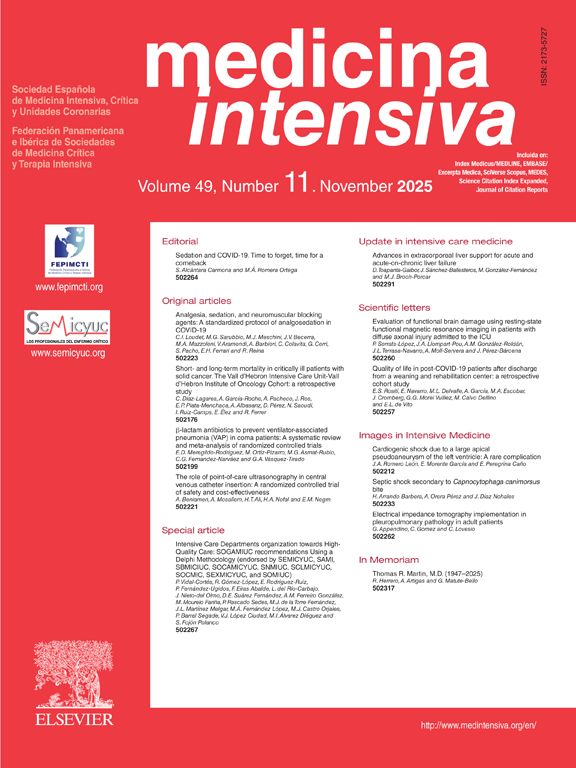To detect possible reasons for mortality of critical patients transferred from the ICU to the hospital wards and to analyze the possible attributable causes for such mortality.
DesignAn observational study of prospectively collected data, analyzed retrospectively.
PopulationCohort analysis of 5328 with consecutive admissions to our ICU, whose evolution was followed up to hospital discharge or death.
PeriodFrom January 2006 to December 2009.
MethodAn analysis was made of differential significance of epidemiological, clinical-care, death risk estimate, coincidence between ICU admissions reasons and causes of death after ICU discharge, as well as limitation of health care effort incidence. Inappropriate ICU discharge was considered to exist if the death occurred during the first 48 hours after ICU transfer, without limitation of care effort.
ResultsA total of 907 patients died (SMR = 0.9; 95% CI, 0.87–0.93), 202 of whom died after ICU discharge (3.8% of total sample and 22.3% of all deceased patients), ward length of stay being 12.4±17.9 days. No significant differences were found between deaths in the ICU or post-ICU deaths regarding infective complications appearing after admission to the ICU. Greater mortality was also not found in those re-admitted to the ICU after having been transferred to the ward. It was verified that the cause of death in the ward did not significantly coincide with the cause of admission to the ICU.
DiscussionSome mortality after ICU discharge is to be expected. Our data do not allow us to attribute this mortality rate to care deficiencies (inappropriate ICU discharges or deceased care in the wards). The reasons for this mortality have a varied and variable explanation. It mostly corresponds to an evolution of the patients differing from that expected when they were discharged from ICU.
Detectar posibles razones de la mortalidad de los pacientes críticos trasladados desde la UCI a las plantas del hospital y analizar las potenciales causas atribuibles de esta mortalidad.
DiseñoEstudio observacional de datos prospectivos analizados retrospectivamente.
MuestraCohorte de 5.328 pacientes ingresados consecutivamente en nuestro SMI cuya evolución se sigue hasta el fallecimiento o el alta hospitalaria.
PeríodoDesde enero de 2006 a diciembre de 2009.
MétodoAnálisis de significación diferencial de datos epidemiológicos, clínico-asistenciales, de estimación de riesgo de muerte, de coincidencia de diagnóstico de causa de ingreso en UCI y de causa de fallecimiento y de incidencia de limitación de esfuerzo asistencial. Se consideró alta inadecuada de UCI si la muerte acontecía antes de las 48 h del traslado, sin limitación de esfuerzo asistencial.
ResultadosFallecieron 907 pacientes (tasa estandarizada de 0,9; IC del 95%, 0,87–0,93) de los que 202 fallecieron tras el alta del SMI (el 3,8% de la población total y el 22,3% de los fallecidos); la estancia en planta post-UCI fue de 12,4±17,9 días. No se detectaron diferencias significativas entre los fallecidos en UCI o tras la estancia en UCI respecto a complicaciones infectivas aparecidas tras el ingreso. Tampoco los reingresados en UCI tras el pase a planta presentaron una mayor mortalidad. Se comprueba que la causa de muerte en planta no es significativamente coincidente con la causa de ingreso en UCI.
DiscusiónCierta mortalidad de pacientes críticos tras el traslado desde UCI es un hecho habitual. Nuestros datos no permiten atribuir esta mortalidad a deficiencias asistenciales (altas inadecuadas o disminución de asistencia en planta). Las razones para esta mortalidad tienen una explicación variada y variable, y en su mayoría corresponden a evolución del paciente diferente de la previsible tras el traslado desde el SMI.




